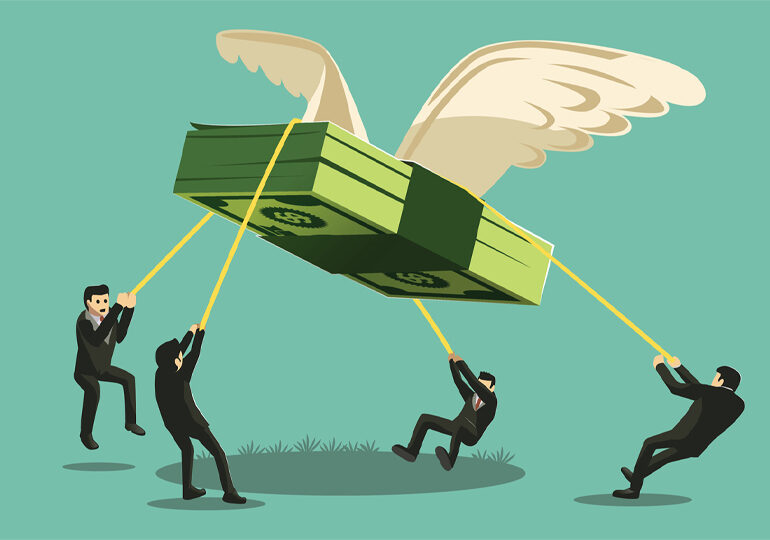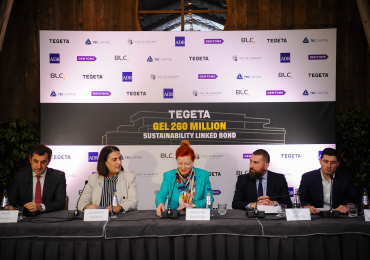In August this year, annual inflation in Georgia reached a ten-year high of 12.8%, before falling to 12.3% the following month.
Inflation is calculated as a result of changes in the prices of 305 items of goods and services included in the consumer basket. These are 305 types of goods and services that enjoy the greatest demand among the population of Georgia and account for a large share of people’s expenses.
The 12.3% inflation figure recorded at the end of September means that during the period between September 2020 and September 2021, the cost of basic consumer goods and services rose by an average of 12.3%. The largest contributor (with a 5% share in the rate of inflation) was the price of food and non-alcoholic beverages, which increased by 16%during the past year. The next biggest contributor (with a 2.5% share) was the rise in the cost of goods and services in the transport category, including a 44% increase in the price of petrol. The increase in utility charges hiked up inflation by 1.7 percentage points. According to the National Statistics Office of Georgia (Geostat), the only goods and services that became cheaper during the last year were clothes and shoes (by 1.1%) and communications (by 0.6%).
If we break down the consumer basket into greater detail, we see that the largest increase was in the price of aubergine (152%), followed by cucumber (82%), sunflower oil (77%) and greens (72%).
The Coronavirus pandemic has strengthened the inflation process across the whole world. On the one hand, it created problems with the supply of goods and services, while on the other hand, governments have been forced to increase social assistance to the population, and to offer business subsidies and/or tax breaks. Central banks have largely softened their monetary policy by reducing refinance rates. When product supply falls while demand remains stable, the price of a product will inevitably increase. In fact, prices may go up even if demand falls. In such times, the social picture in a country becomes significantly worse. The situation has been further complicated by the fact that the pandemic is lasting longer than expected. Since the end of last year, governments have been forced to lift economic restrictions and get used to living with the virus to a certain extent.
The IMF’s global inflation forecast for 2021 is 4.8%, which is a 14-year high. The inflation rate will be 3.5% in developed countries and 5.8% in developing countries. Inflation will be even higher in the developing countries of Europe – 8.5%. The IMF groups Georgia together with the countries of the Middle East and Central Asia. In this group of countries, prices will increase by 10.3% in 2021.
According to the World Bank, the problem of global inflation is largely driven by a 70% increase in the price of oil during the past year. This came about as transport services were restored. Food prices went up by 28%– cooking oil became 40% more expensive, while the price of cereal increased by 23%. During the last two years, the price of wheat went up by 45%. Metals and minerals became 49% more expensive.
The IMF predicts that Georgia will close the year with an inflation figure of 13.1%. Even against the background of inflation currently affecting almost every country in the world to a certain extent, 13.1% is a high figure that would place Georgia 19th in the world in terms of inflation. Compared with Georgia’s neighbours, only Turkey has a bigger problem with inflation, which reached 20% in September.
The high level of inflation in Georgia is primarily conditioned by so-called imported inflation – the rise in the cost of basic consumer goods (such as food and oil). Together with an increase in the global prices of these goods, Georgia’s problems have been exacerbated by the devaluation of its currency. According to the National Bank of Georgia, the cost of imports went up by 18%, while local produce became 7% more expensive (as of August 2021). Currency depreciation also raised utility payments. Apart from having a direct effect on inflation, this also led to an increase in the cost of manufacturing.
Although the lari strengthened against the dollar in June this year and the exchange rate stabilized, the prices of goods and services continued to rise. This was due to the continued increase in the price of imported goods and growing domestic demand. Statistics show that household consumption in Georgia decreased during periods of strict pandemic-related restrictions, while at other times it increased significantly. Public sector consumption between the first quarter of 2020 and the second quarter of 2021 increased consistently by an average of 5.4% (third-quarter figures are yet to be published). Lending to the economy began to increase in September 2020, growing by an average of 5.3% per month between September and December that year. This was largely facilitated by the government reducing the monetary interest rate from 9% to 8% and providing interest subsidies for bank loans. In 2021, the government reduced loan subsidies and gradually increased the monetary interest rate to 10%. As a result, average loan growth fell to 2% in February-August 2021. There have been no significant changes in interest rates on loans and deposits in national currency or in foreign currency loans since the start of the pandemic, which indicates that there was not an oversupply of money (in which case the rates would have decreased).
The 15 products that accounted for the largest price increases in the last year
Item | Price Increase |
| Aubergine | 152% |
| Cucumber | 82% |
| Sunflower Oil | 77% |
| Greens | 72% |
| Thermometer | 68% |
| Beetroot | 65% |
| Carrot | 61% |
| Cabbage | 58% |
| Nails | 46% |
| Petrol | 44% |
| Tomato | 42% |
| Kiwi Fruit | 38% |
| Green Beans | 37% |
| Diesel Fuel | 37% |
| Sugar | 36% |
Source: Geostat
The main challenge for Georgia today is to stop the rise in prices. Bearing in mind that imported inflation and the increase in utility charges are one-off factors, a stricter monetary policy should yield better results. However, there are two significant challenges: 1. Government expenditure and the budget deficit, and 2. Expected inflation. In 2020-2021, the government had to borrow an additional H9 million to spend on social assistance, subsidies, and other ongoing programmes, which had a significant influence on-demand growth. Nevertheless, this new debt helped prevent further deterioration of the social environment and the economy. Furthermore, by subsidizing lending (e.g., mortgages and business loans), the government mitigated the impact of restrictions on the economy. While the National Bank of Georgia was trying to slow loan growth by increasing the refinancing rate, the government was countering NBG’s measures by helping citizens to obtain loans. Reversing the growth in budget spending and reducing the deficit in 2022 would help rein in inflation. However, the failure of the mass vaccination programme will make it difficult to reduce spending. By the end of this year, the government will have spent at least H1 billion on the treatment of COVID-19 patients. It has already allocated H500 million for the same purpose for next year, which is unlikely to be enough.
Generally, a pandemic is characterized by uncertainty, and making economic calculations becomes difficult. The previous period and the 12% economic growth recorded in the first eight months of this year showed that more emphasis should have been placed on inflation and stability of the lari.


















